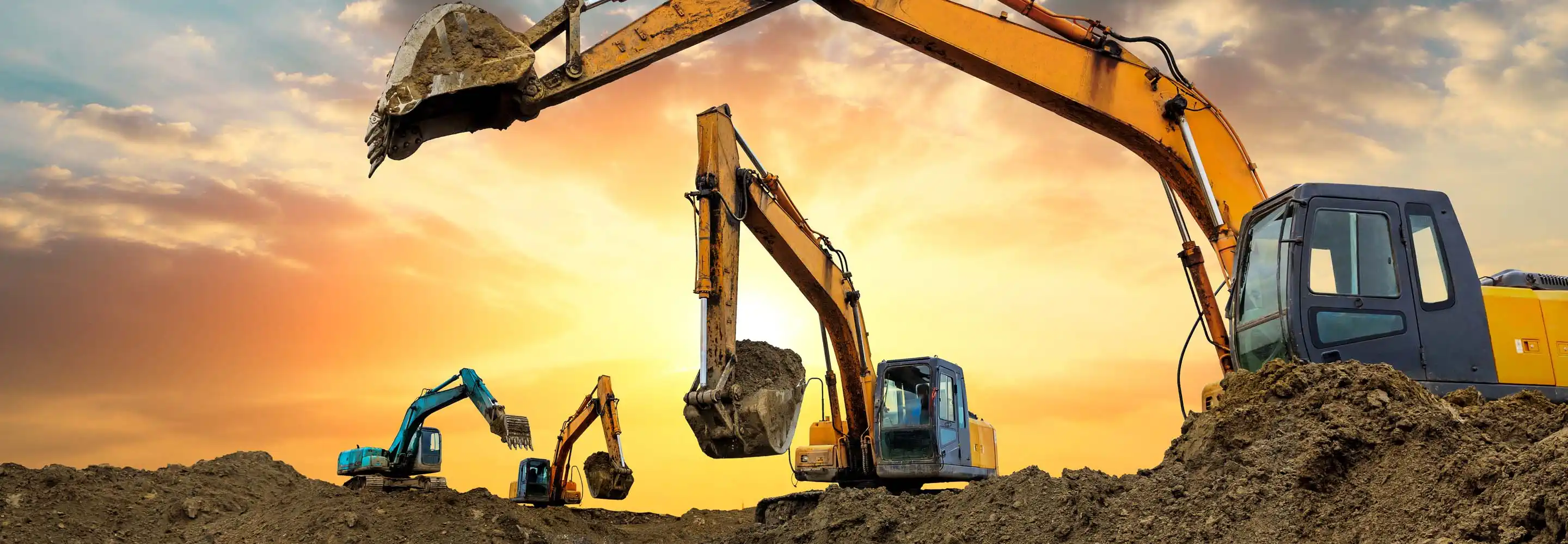Reliable Construction Equipment Rentals for Your Tasks
Reliable Construction Equipment Rentals for Your Tasks
Blog Article
Renting Out Vs. Purchasing Construction Equipment: Making the Right Option for Your Task
When embarking on a building and construction task, one of the vital decisions that project supervisors and stakeholders face is whether to purchase or rent out building devices. The decision pivots on different aspects such as expense considerations, project period, tools upkeep, scalability, versatility, and risk management.
Expense Considerations
Leasing equipment typically requires reduced first repayments compared to acquiring, making it an appealing option for temporary jobs or service providers with spending plan restraints. In the lengthy run, consistently renting devices can build up higher expenses than purchasing, specifically for prolonged tasks.
On the other hand, purchasing building devices involves greater ahead of time expenses however can result in lasting cost savings, particularly for long-term jobs or constant individuals. Possessing devices supplies flexibility, convenience, and the potential for resale worth once the project is finished. Furthermore, possessing tools enables personalization and familiarity with specific machinery, possibly increasing efficiency and efficiency on-site. Ultimately, the choice in between acquiring and renting out building and construction equipment depends upon the job's duration, frequency of usage, budget factors to consider, and long-lasting financial goals.
Project Period

Conversely, for lasting projects or recurring building and construction work, buying equipment might be the much more economical option. Buying devices can bring about cost savings in the lengthy run, particularly if the devices will be frequently utilized. In addition, having devices supplies a sense of control over its availability and enables personalization to fit details project requirements.

Tools Maintenance
Given the essential role task period plays in figuring out the most cost-efficient method in between renting out and acquiring building and construction devices, the focus now changes towards taking a look at the essential element of equipment upkeep. Appropriate upkeep is crucial for making sure the optimum performance and long life of building devices. Renting tools typically comes with the benefit of having well-kept machinery given by the rental business. This can minimize the concern of upkeep jobs from the task owner or service provider, conserving effort and time. On the various other hand, having equipment calls for a proactive approach to maintenance to stop malfunctions, ensure security, and expand the tools's life-span. Routine evaluations, maintenance, and timely fixings are needed to keep owned and operated devices in top working condition. Consider maintenance expenses when making a decision between renting and purchasing, as disregarding maintenance can cause pricey repair work, downtime, and task hold-ups. Inevitably, a well-maintained construction devices fleet, whether rented out or had, is necessary for the successful and efficient conclusion of construction jobs.
Adaptability and Scalability
In the realm of building equipment monitoring, the facet of versatility and scalability holds significant significance for project efficiency and resource usage. Deciding to rent construction tools gives a high level of flexibility as it permits the quick modification of equipment kinds and amounts based on the progressing requirements of a project. Renting makes it possible for service providers to access a wide array of specific visit this web-site devices that might be required for particular jobs without the long-lasting dedication of ownership. This flexibility is particularly beneficial for tasks with differing needs or uncertain durations (heavy equipment rental).
Leasing construction tools uses the advantage of quickly scaling procedures up or down as project demands rise and fall. Contractors can promptly add or exchange equipment to match the task's changing needs without the restrictions of owning possessions that might end up being underutilized or out-of-date.
Danger Monitoring
Reliable danger management in building and construction tools procedures is extremely important to making certain task success and mitigating prospective economic losses. Building and construction projects inherently entail different risks, such as tools malfunctions, crashes, and job hold-ups, which can dramatically influence the job timeline and budget plan. By carefully considering the dangers associated with owning or renting out construction devices, job managers can make enlightened decisions to minimize these prospective threats.
Renting out building and construction tools can use a level of threat mitigation by moving the duty of repair and maintenance to the rental company. This can lower the financial concern on the job proprietor in case of unforeseen tools failings (rental company near me). In addition, leasing supplies the adaptability to access customized devices for particular task stages, decreasing the risk of having underutilized machinery
On the other hand, possessing building devices gives a feeling of used graders for sale control over its use and upkeep. Nevertheless, this likewise means birthing the full duty for repairs, maintenance expenses, and devaluation, raising the financial threats linked with devices possession. Mindful danger evaluation and consideration of aspects such as project duration, equipment utilization, and upkeep needs are essential in identifying the most suitable choice for efficient danger management in construction tasks.
Verdict
In verdict, when deciding between renting and purchasing building and construction devices, it is necessary to take into consideration cost, project period, devices maintenance, adaptability, risk, and scalability administration. Each factor plays an important function in determining the most ideal option for the job at hand. By very carefully reviewing these facets, project supervisors can make an educated choice that aligns with their budget, timeline, and overall job goals.

Report this page